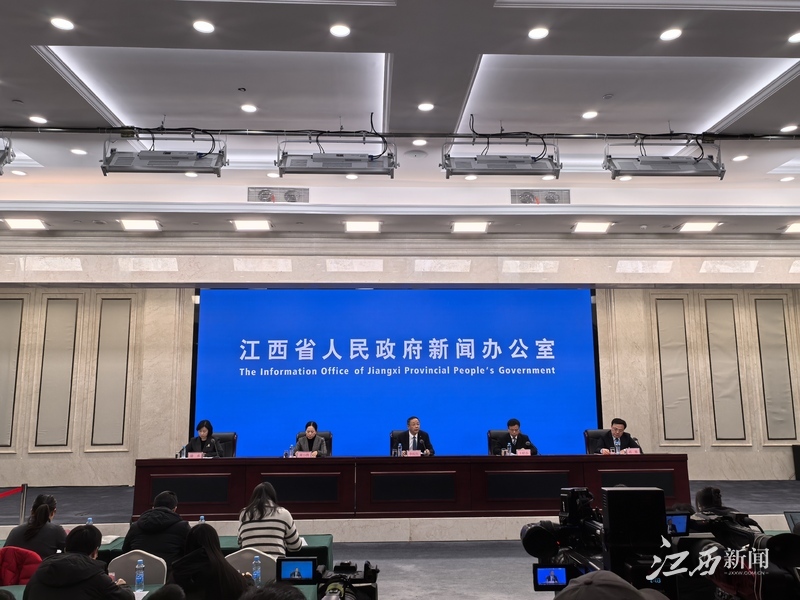The Counterattack Of China's Largest Province: Xinjiang Is On The Axis Of The Times
The Counterattack Of China's Largest Province: Xinjiang Is On The Axis Of The Times
Hello everyone, I am Gao Heng, the author of Gao Jianguanchao. Today we will talk about the opportunities and changes in Xinjiang province. Welcome to leave a message for discussion. At the westernmost end of China's territory, Xinjiang ranks first among the largest provincial administrative regions in the country with a land area of 1.66 million square kilometers.

Hello everyone, I am Gao Heng, the author of Gao Jianguanchao. Today we will talk about the opportunities and changes in Xinjiang province. Welcome to leave a message for discussion.
At the westernmost end of China's territory, Xinjiang ranks first among the largest provincial administrative regions in the country with a land area of 1.66 million square kilometers.
It was once regarded as the "back garden for the security of a great power" and was also labeled as a "resource province far away from the main battlefield of the economy"; but today, with the reconstruction of the global supply chain, the "dual circulation" strategy, and the drastic geopolitical changes, this land power node located in the hinterland of Asia and Europe is ushering in an unprecedented strategic "realization".
From a national perspective, Xinjiang is no longer just a "stabilizer" or "buffer zone", but is being redefined as: a compound "geological fulcrum" that can connect Asia and Europe to the west, support growth inward, and release energy and agricultural production supply to the world.
Its foreign trade is soaring against the wind, its energy structure spans kerosene oil and gas, and grain output and yield jump at the same time. It is not close to the sea, but it has the most ports and airports, and is moving from a "channel economy" to a "hub economy" and then to a "industrial economy".
The time node for the 70th anniversary of the founding of the autonomous region has been given multiple strategic positionings: the core area of the Silk Road Economic Belt, the Asia-Europe Golden Channel, the national geopolitical security barrier, and the energy and resource guarantee area... This is a higher-level task than regional revitalization, and a structural dispatch on "regional rebalancing".
From a large geographical province to a strong economic province, the key to Xinjiang is not how many shortcomings it can be made up for, but whether it can turn its "strategic position" into a "growth fulcrum".
This is a multi-dimensional coordination of geography, transportation, industry, capital, system and population. It's not starting from scratch, but every step is not easy.
But it is precisely because it is not easy to do that it is important and urgent.
01: The basic value of Xinjiang is being repriced
If China's map is enlarged, Xinjiang is always the province that is most easily overlooked and overestimated. The neglect is that it has a distant geographical location, sparse population, and a weak sense of existence; overestimation is due to its oversized area, rich resource endowment, and important strategic location. But for a long time, these geographical and resource advantages have been difficult to transform into actual economic growth momentum.
Until today, Xinjiang's "basic value" has begun to be repriced.
The land area of 1.66 million square kilometers accounts for one-sixth of the country, which is equivalent to the sum of the total area of economically strong provinces such as Guangdong, Jiangsu, Shandong, Zhejiang and Sichuan. From a geographical perspective, Xinjiang can "one province, one country." But the problem is that large area does not mean strong economy. For a long time in the past, Xinjiang has become more like a "rear warehouse of national strategy" than a "front line of industrial value."
However, this situation is being broken by structural variables.
From a macro perspective, the three security logics of "geographical security", "energy security" and "food security" have been promoted in parallel, and Xinjiang has hit all the hot spots at one time and has become one of the provinces with the most value of support at the national level. In the past 10 years, Xinjiang's GDP has jumped from 900 billion yuan to more than 2 trillion yuan, with an average annual growth rate of 7%, always standing in the first echelon of the country. Behind this are three curves rising at the same time: foreign trade growth, energy explosion, and agricultural leap.
First of all, the foreign trade curve. Against the backdrop of global trade tensions and the return of industrial chains, traditional coastal channels are under pressure, while Xinjiang's "inland and outward-type province" stands out. In the first eight months of 2024, Xinjiang's total import and export volume reached 356.3 billion yuan, a year-on-year increase of 25.4%, surpassing central provinces such as Hunan and Shaanxi. What is more noteworthy is that the number of China-Europe (Central Asia) trains on the two ports of Xinjiang Railway exceeded 10,000 for five consecutive years, reaching 16,400 last year, almost equivalent to two trains heading towards the hinterland of the Eurasian continent every hour. In the past three years, Xinjiang's total foreign trade volume has achieved a jump from 200 billion to 400 billion, and it took a full 15 years to go from 100 billion to 200 billion.
The second is the energy chassis. Xinjiang is not a major energy province, but a "all-round energy super province." The country's oil and gas production is the first, the raw coal production is the fourth, the wind power installed capacity is the second, and the photovoltaic installed capacity is the fourth, covering almost all the tracks of China's energy structure. With the help of ultra-high voltage transmission project, Xinjiang's "West-to-East Power Transmission" directly reaches 22 provinces including Beijing-Tianjin-Hebei, Jiangsu, Zhejiang, Shanghai, Sichuan and Chongqing, becoming a veritable national energy center. In other words, behind the lights of the peak electricity consumption in the east, a lot of electricity comes from the foot of the Tianshan Mountains.
Finally, there is the agricultural reversal. Who would have thought that the "yellow sand Gobi" in the traditional sense has now become the "granary of the west"? In 2024, Xinjiang's total grain output reached 46.6 billion jin, ranking 13th in the country, the growth of planting area was the first in the country, and the yield was 524.8 kilograms per mu. Xinjiang not only produces fruits and cotton, but also produces wheat and corn, and even develops cold-water farming such as salmon and grouper. The transition from "net grain import province" to "self-sufficiency province in output" marks the true take-up of Xinjiang's agricultural structure.
If the east is the engine of China's economy, then today's Xinjiang has begun to be qualified to become a "strategic support point" and a "resource safety valve". This is not an accidental prosperity, but the result of the reconstruction of policy logic, geopolitical logic, and supply chain logic.
Xinjiang has begun to be regarded as a place that "really can take charge of things".
02: From channel economy to industrial economy, Xinjiang is not just "making money through the road"
Xinjiang has long been called the "node of the Silk Road on the Land", but the meaning of the node is not equivalent to a hub. Nodes can be just passing points, but hubs mean traffic aggregation, value stay and industrial precipitation. For a long time, Xinjiang was given the role of "channel economy": it is located in the hinterland of the Eurasian continent and is a must-pass place for land transportation in and out of Europe and Asia. China-Europe freight trains enter and exit here, and trade goods are transferred from here, but these traffic once only transited rather than stayed.
Now, the situation has changed - Xinjiang has begun to become a "traffic residency" and a "industry carrier".
The most typical example is the change of the China-Europe (Central Asia) train: from a simple "pass" to "integration assembly export processing logistics hub". Taking Horgos as an example, this small Sino-Kazakh border town was just a pass in the past, but now it has functional modules such as bonded areas, cross-border e-commerce parks, and processing and manufacturing areas. After the train arrives, it is no longer just a replacement and departure, but it is distributed as soon as the goods arrive, processing as soon as they are distributed, and processing as soon as they are processed, and processing as soon as they are processed. The value chain is lengthened and the industrial chain has begun to take root.
Xinjiang is not near the sea, but it has the largest number of opening ports in the country: the number of openings of 19 ports is even more than many coastal provinces. Urumqi has been included in one of the 20 national comprehensive transportation hubs, and Kashgar and Horgos have been approved to establish special economic zones, which is extremely rare among border provinces. Looking across the country, only high-level development zones such as Shenzhen, Pudong, and Tianjin Binhai have similar status as "multi-label superposition".
Policy intensity is an important reference for judging regional strategic priorities. In the national "14th Five-Year Plan" spatial strategy, Xinjiang has obtained "five strategic positions": a bridgehead for opening the Asia-Europe Golden Channel to the west, a strategic fulcrum for the new development pattern, a strategic guarantee base for energy and resources, an important supply base for high-quality agricultural and animal husbandry products in the country, and a national geopolitical security barrier. These are not empty statements, but correspond to real and implementable industrial planning and spatial scheduling.
Under this logic, Xinjiang is no longer a geographical ending that “needs assistance”, but has become a "national front desk" that opens westward for China.
More importantly, this transformation of channel economy into industrial economy is not an administrative act driven by forced planning, but an "endogenous demand" forced by the international pattern.
Against the backdrop of "unstable sea freight, expensive air freight, and differentiation of foreign demand", the focus of logistics in Eurasia itself is returning to land, and it prefers the "land-to-land" channel that is controllable, convenient and risk-avoiding. And Xinjiang hits these three points:
• Controllability: It is launched and regulated throughout China, which is conducive to policy scheduling;
• Convenience: Multimodal transport of railways, trucks and waterways is opened up to improve efficiency;
• Avoidance: Avoid unstable waters such as the Black Sea and the Red Sea, and reduce political costs.
These changes mean that Xinjiang is no longer just a place to "get rich through the road", but has become a key industrial place for regional manufacturing, Asia-Europe integration, and linkage between China and the West.
In the era of maritime power, coastal dominance; in the era of land power, inland rise. Xinjiang's role has changed from a "geographic node" to a "industrial fulcrum", which is the most imaginative transition in this round of changes.
03: After striving for infrastructure, Xinjiang's spatial pattern is being completely rewritten
If you want to be rich, build a road first. This sentence is given greater geographical and strategic significance in the context of Xinjiang. For this frontier province, which was once described as "the end of the road, the end of the water, and the end of the electricity", transportation infrastructure not only concerns the speed of development, but also determines the role of development.
For a long time, Xinjiang has been mainly labeled as "distant", "scattered" and "not connected". Even if there are rich resources and dense ports, it is difficult to convert into economic benefits due to the "bottleneck" of transportation. And all of this is being rapidly changed by an unprecedented "infrastructure rush".
First is the explosive growth of highway networks. More than a decade ago, the total mileage of highways in Xinjiang was less than 1,000 kilometers, ranking last in the country. By 2024, this number has exceeded 8,000 kilometers, jumping to sixth in the country. "Build a highway hard" is no longer an adjective, but a real execution rhythm.
The latest Duku Expressway project started, is called the "Tianshan Second Passage". The total investment is as high as 76 billion yuan. After completion, it will completely break through the north-south traffic bottleneck of the Tianshan Mountains, and the access time will be shortened from 13 hours to less than 3 hours. This is not only an improvement in transportation speed, but also a systematic reconstruction of the industry, population and logistics connectivity between southern and northern Xinjiang.
The second is the strategic move of the new railway channel. The construction of the Xinhua Railway, which has invested hundreds of billions of yuan, will be started at the end of this year. The line will cross the "roof of the world" to connect Tibet and Xinjiang, and its strategic significance is comparable to that of the Qinghai-Tibet Railway back then. Once completed, it will not only strengthen the economic linkage of the western border, but will also lay the foundation for the future "Pan-Asia Railway" and even the interconnection between China, India and Central Asia.





